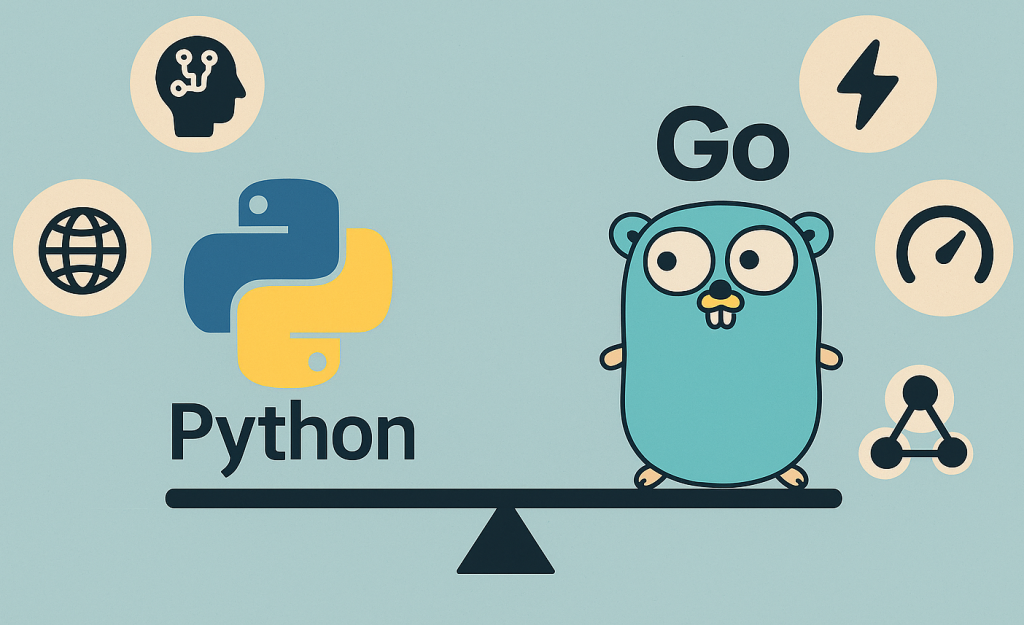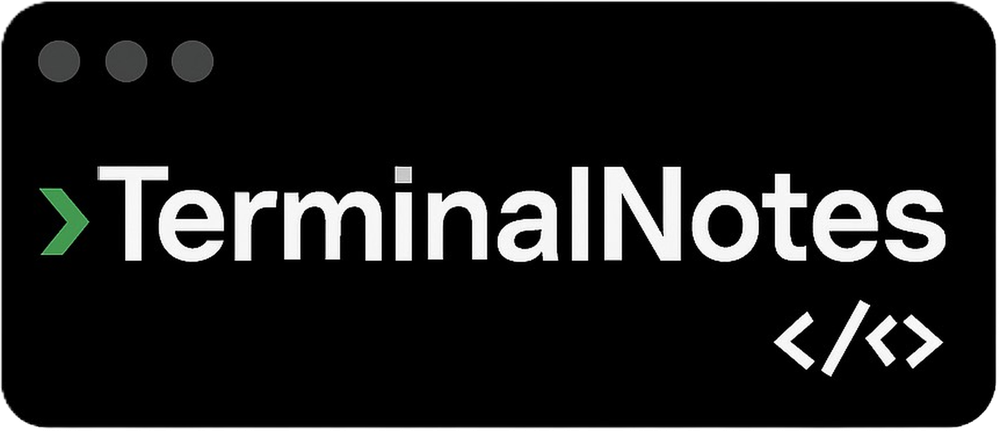Sharing notes from my ongoing learning journey — what I build, break and understand along the way.
Python vs Go (Golang): Key Differences, Advantages, and Use Cases
Comparing Python and Go: Performance, Simplicity, and When to Use Each
When I first started learning programming, the two languages I kept hearing about were Python and Go. Python has been around for a long time; it shows up in everything from AI and data science to web development and automation. Go, on the other hand, is newer, developed by Google, and often recommended for high-performance applications.
The question that kept bothering me was: “When should I use Python, and when does Go make more sense?” In this post, I want to share what I’ve learned through research and practice. I’ll also show some code examples to highlight the differences, but first let’s set the stage.
The Origins and Philosophy of Go
Go (or Golang) was created in 2009 by Google engineers. At the time, Google was struggling with massive servers and distributed systems. They were stuck between languages like C++ (fast but complex) and Python (easy but slow). Their solution was to design a language that combined speed with simplicity.
Go’s philosophy can be summed up in three words: simplicity, speed, concurrency. In other words, the code should be simple to write, it should run fast, and it should handle many tasks at the same time. Today, Go is widely used in backend services, microservices, and cloud-based applications.
Python’s Strengths and Popularity
Python’s popularity is no accident. When Guido van Rossum introduced it in 1991, the main focus was readability. You can often understand Python code at first glance.
But its true power comes from the community and ecosystem. Want to do data science? Use NumPy or Pandas. Interested in AI? There’s TensorFlow and PyTorch. Need web development? Django or Flask has you covered. Whatever the field, Python has a package for it.
Its drawback is performance. Since Python is an interpreted language, it’s slower compared to compiled languages like C, Go, or Rust. Still, in many cases, development speed and ecosystem support matter more than raw execution speed.
Learning Curve
From my experience, Python is friendlier for complete beginners. Writing and running your first code is incredibly easy—often just one line.
Go is also simple, but a little more formal. Every file starts with things like package main and func main(). That makes the code longer, but it also enforces structure right from the start.
Hello World example:
Python:
print("Hello World")
Go:
package main
import "fmt"
func main() {
fmt.Println("Hello World")
}
Python looks much shorter, but Go makes everything explicit: which package, which function, what output.
Code Style and Teamwork
Python is a flexible language. You can write everything in one line, or spread it out across many. This flexibility is nice, but in larger teams it can cause inconsistent code styles.
Go is much stricter. Thanks to the built-in go fmt tool, everyone’s code is automatically formatted in the same way. There are no “style debates” in Go, and while this may feel rigid, it’s a big advantage in team projects.
Concurrency
One of Go’s strongest features is concurrency—being able to handle many tasks at the same time. This is especially critical for web services and distributed systems.
Python does have threading and multiprocessing, but it’s more complex to use. In Go, you just add the go keyword.
Python threading example:
import threading
def worker():
print("Working")
threads = []
for i in range(5):
t = threading.Thread(target=worker)
threads.append(t)
t.start()
Go goroutine example:
package main
import (
"fmt"
"time"
)
func worker(id int) {
fmt.Println("Working:", id)
}
func main() {
for i := 0; i < 5; i++ {
go worker(i)
}
time.Sleep(time.Second)
}
In Python, creating and managing threads takes more code and usually requires external libraries for more advanced use. In Go, go worker(i) is all it takes.
Performance and Use Cases
Go is compiled, so it’s much faster than Python. That’s why many high-traffic backend services are written in Go. In fact, big companies like Google, Uber, and Dropbox use Go for critical services.
Python, on the other hand, is usually chosen for ease of development rather than speed. For data science, AI, and rapid prototyping, Python is unmatched.
A Small Web Server Comparison
One of the clearest ways to see the difference is writing a simple web server.
Python (with Flask):
from flask import Flask
app = Flask(__name__)
@app.route("/")
def hello():
return "Hello World"
if __name__ == "__main__":
app.run()
Go (with standard library):
package main
import (
"fmt"
"net/http"
)
func handler(w http.ResponseWriter, r *http.Request) {
fmt.Fprintf(w, "Hello World")
}
func main() {
http.HandleFunc("/", handler)
http.ListenAndServe(":8080", nil)
}
In Python, we rely on an external framework like Flask. In Go, we can achieve the same with just the standard library. This reflects Go’s philosophy of providing a powerful standard library right out of the box.
Conclusion: Which Should You Choose?
Here’s the summary I’ve come to:
- Python: Easy to learn, incredibly rich ecosystem, great for rapid prototyping. But limited in performance.
- Go: High-performance, powerful concurrency, strong standard library. But smaller ecosystem compared to Python.

In my opinion, learning both is worth it. Python opens the door to countless fields, while Go equips you to build fast, scalable services. Comparing them side by side has been a great learning experience for me.
